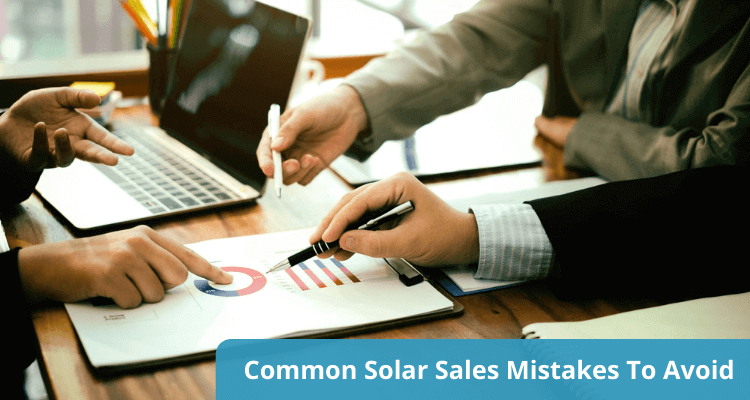The most common mistakes in selling a PV plant
The investment in a commercial photovoltaic system (PV system) is usually designed for its legally fixed remuneration period, often with the option of being able to continue operating the system for a few more years at market conditions.
Despite long-term planning, situations can arise that force us to part with a PV investment prematurely. Reasons to sell are varied. Whether planned or unplanned, every seller should start the sales process optimally prepared and avoid any misstep.
We have listed below some mistakes that anyone should avoid any time possible.
1. Incorrect or incomplete documentation
In order to make a professional impression as a seller on a prospective buyer right from the start, complete and clean documentation of the PV system is essential. This includes planning documents, contracts, permits, documentation, invoices and warranty documents.
Not only do you have all the documents and information quickly at hand, saving time and thus money in the due diligence process, but incomplete or non-transparent documentation creates an uneasy feeling in any prospective buyer, which slows down the transaction but can also be detrimental to the purchase price.
Tip: Milk the Sun provides its customers with a clearly structured, secure online data room free of charge. Click here to go to the Solarganizer.
2. Wrong price expectations
One of the most important factors for the successful sale of a PV system lies in finding the right price. Indeed, resolving the conflict of interest between the seller (with a high price expectation) and the investor (getting the highest possible return for the capital invested) is usually the biggest challenge.
As a seller, it is only logical to want to obtain as high a price as possible for one’s own PV system. This is also achievable if the buyer’s goals are realistically taken into account.
Sellers should bear in mind that buyers have to recoup their investment amount with interest after running costs. The investment price should therefore be calculated in such a way that the buyer can achieve a return in line with the market.
A price that is too high and not in line with the market will deter potential investors from the outset. A small price premium, on the other hand, should always be included in the initial offer.
Tip: Use Milk the Sun’s net worth calculator to determine a fair market price for the sale of your PV system, free of charge.
3. Tax issues not taken into account
Optimal preparation of a sales process also includes a discussion with your tax advisor. It is not only a question here of optimising the sale as much as possible from a tax point of view, but above all of avoiding mistakes that lead to unexpected tax effects which, in the worst case, trigger tax payments that are considerably detrimental to liquidity.
It is particularly annoying for all parties if during the ongoing negotiations, which have often already triggered costs for advisors on both sides, it emerges that a sale does not make sense for the seller for tax reasons. Every seller should definitely clarify this point in advance.
4. Financing costs not taken into account
Since a large proportion of all commercial PV systems are financed by banks, the seller should check beforehands how the financing can be handled in the event of a sale. If the financing bank insists on the redemption of the financing, it is essential to ask about the prepayment penalty to be paid.
This cost factor has a direct impact on the achievable sales price and can have a considerable influence on whether a sale is worthwhile at all. In addition, it always makes sense to ask the banks about processing times, as this time component can also have a decisive influence on the transaction process.
5. Transaction time not planned properly
Every transaction needs time for negotiations, verifications and the handling with notaries, banks and authorities. Good documentation and realistic price expectations will definitely speed up the transaction process. External factors can often only be influenced to a limited extent.
Accordingly, the time planning of every seller until cash flow comes in should be realistic, with possible reserves so as not to get under pressure and have to negotiate up against the wall.
As a seller, you should always secure exit options from negotiations with interested parties if they do not meet contractually agreed time frames, in order to be able to start negotiations with other investors if necessary.
Tip: With a free sale advertisement on our online marketplace, you ensure that you have enough prospective buyers to get the best match for you.
6. No first priority easement in the land register – the lessor obstructs
When a commercial PV system is sold, the first-ranking personal easement for the buyer must be registered in the land register of the lessor. If necessary, security must also be entered in the land register for the new financing bank.
It is always advisable to talk to the lessor at an early stage, as these entries require his/her cooperation. Especially when the entire lease has already been paid in advance at the beginning of the lease period, lessors tend to forget this and try to have the necessity of their cooperation “paid for” once again. Eliminating such circumstances in advance helps to avoid disasters in the transaction process.
To summarize, an optimal documentation of the PV system, realistic price expectations and good planning and preparation of the transaction will ensure a succesfful sale of a commercial PV.
This is a free translation. To read the original article in German: click here.





